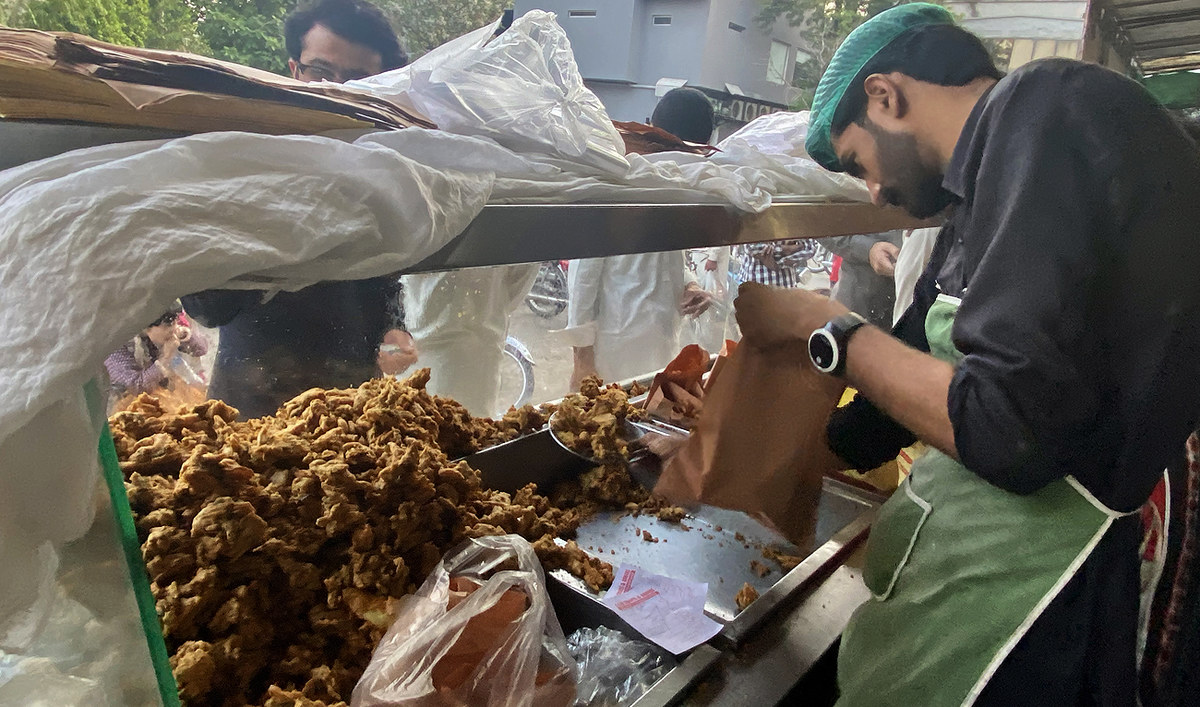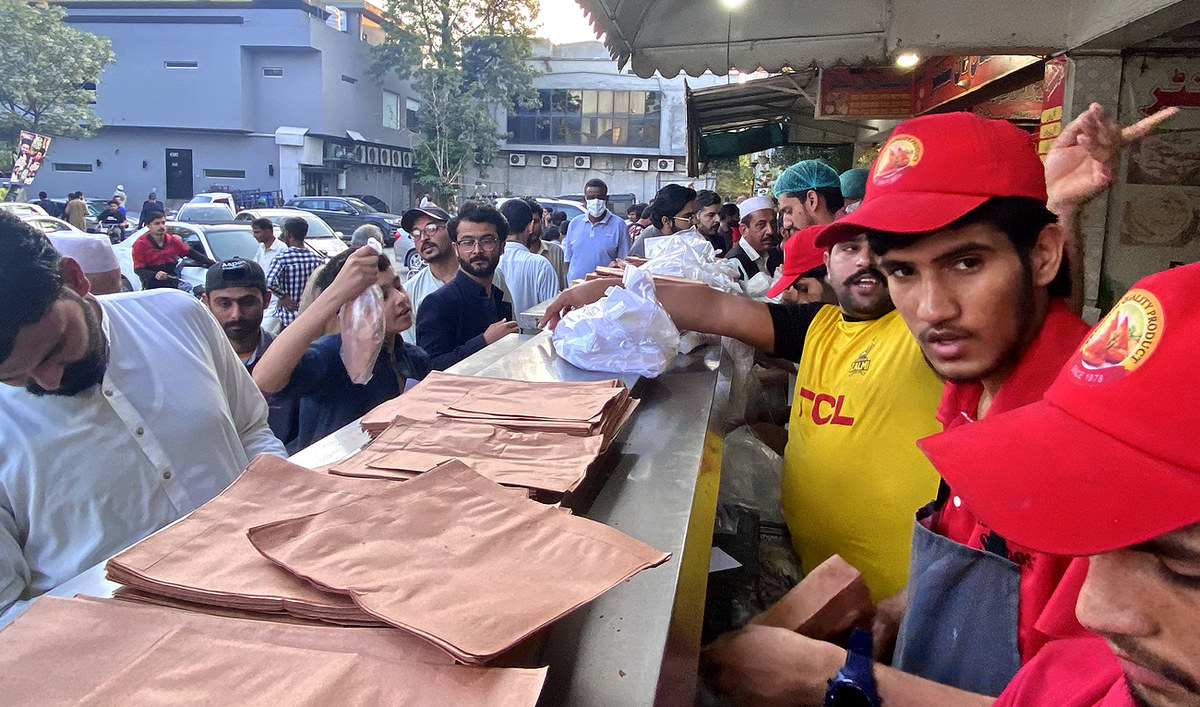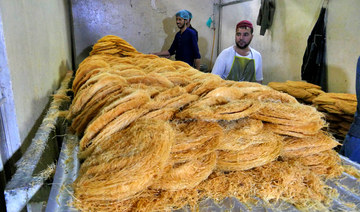ISLAMABAD: Can an iftar meal in Pakistan be complete without pakoras?
Crispy and well-seasoned, pakoras are fritters that can be made from most any vegetable deep fried in spicy chickpea batter and enjoyed with sweet or sour chutney, mint yogurt or dipping sauces. The snack has deep historical roots in the Indian subcontinent but becomes especially popular during the holy month of Ramadan when traditional pakora sellers expand their businesses and new seasonal vendors open makeshift stalls to meet rising demand.
There are many reasons for the deep-fried treats' popularity in Ramadan, not least that they provide the quick energy boost that believers abstaining from food and drink during daylight hours need to break their fast at dusk. The fried snacks are also a common iftar choice due to their low price.
Taimur Adil, a customer standing in line to buy pakoras at the Blue Area commercial area in Islamabad, explained the popularity of pakoras in Ramadan.
“The first is because it's a very calorie-rich snack and you get very hungry during the fast, so, inevitably by the time iftar comes you want to eat something like a pakora … you can't resist it, it's exactly what your body is craving for,” Adil told Arab News.
“The second reason is cultural ... we have been eating this for so many generations that we have come to believe that iftar is not complete without it.”
The ease of making pakoras and the few ingredients required are also attractive features of the snack for those who prefer to make them at home.
“This is an easy recipe that can be prepared at home with just two or three ingredients,” Mrs Tariq Hassan, who was shopping for iftar grocery at Islamabad’s upscale Rana Market, said.
“This is why whether someone belongs to any social class, it is something so easy that it is made in every household.”

A worker prepares a bag of fritters at a market in Islamabad on March 26, 2023. (AN Photo)
Indeed, all it takes to make pakoras is to first thinly chop up some vegetables, usually potatoes, onions, aubergine, spinach and cauliflower. The batter is prepared with chickpea flour, salt and spices and moistened with water. The vegetables are then dipped in the batter and deep-fried until golden brown.
In Ramadan, the demand for the easy-to-make snack skyrockets.
Asghar Ali, a vendor at Siddique Sweets and Bakers, said food items like pakoras, samosas, and other savory fried snacks sell very well in the holy month.
“We are doing this business since 1942 and the demand for our samosas and pakoras increases during Ramadan,” he said, adding that sales increased threefold and he had to hire extra employees to keep up with the demand.
“Our regular staff size of 25 people increases to 80 during Ramadan as approximately 120 kilograms of pakoras and 3,000-4,000 samosas are sold daily,” Ali said.
Another seller at Fresco Sweets, Osman Farooqi, said he only introduced pakoras to his menu in Ramadan.
“On regular days, we don't make fritters, only during Ramadan we prepare it, as demand for these items increases by almost 75 percent,” Farooqi told Arab News, saying his employees had to start preparing the batter and vegetables in the morning so that huge quantities of pakoras could be ready by sunset.
“I make pakoras only in Ramadan as it is in high demand,” Amjad Ali, another vendor said. “We sell around 300 kilograms daily at our four branches in Islamabad.”
And many people also only eat pakoras in Ramadan.
Zulifqar Hussain, shopping for pakoras at an Islamabad neighborhood market, said his children only wanted to break their fast with the vegetable fritters.
“On regular days, we use very little pakoras,” he said, “but in Ramadan their demand increases [because] we need saltish things in iftar.”

People queue to buy fritters at a market to break their fast during the holy month of Ramadan, in Islamabad on March 26, 2023. (AN Photo)

























